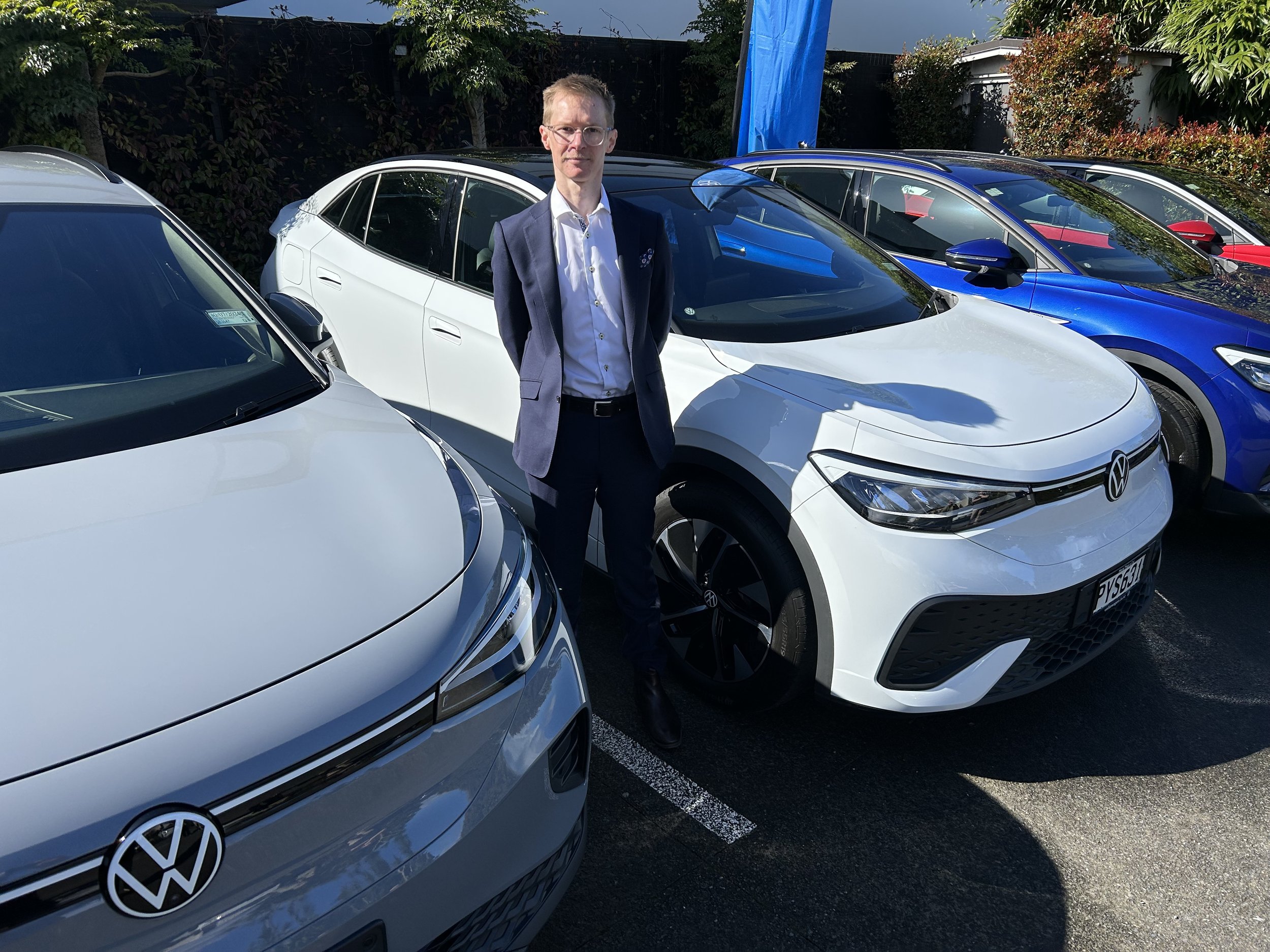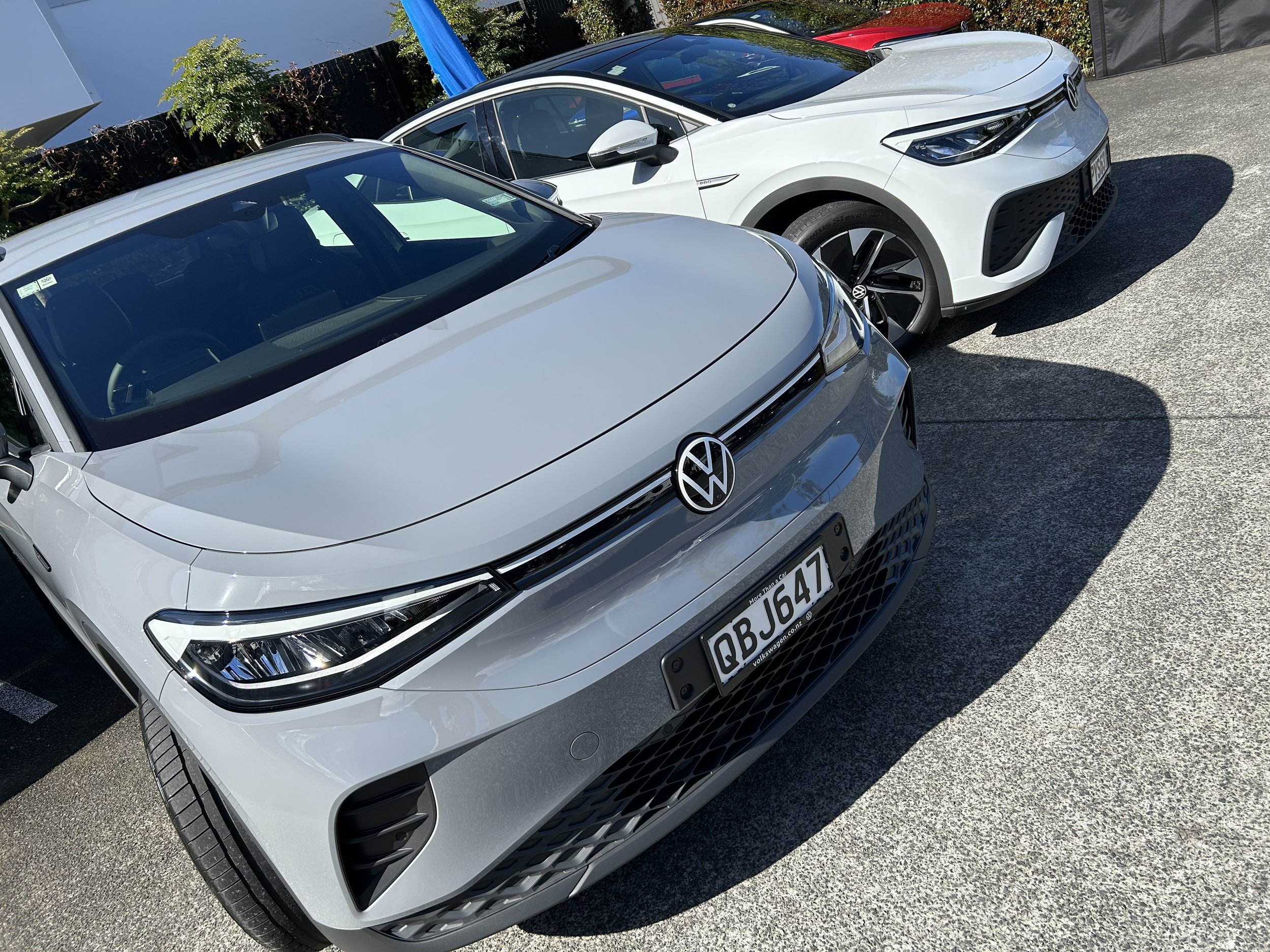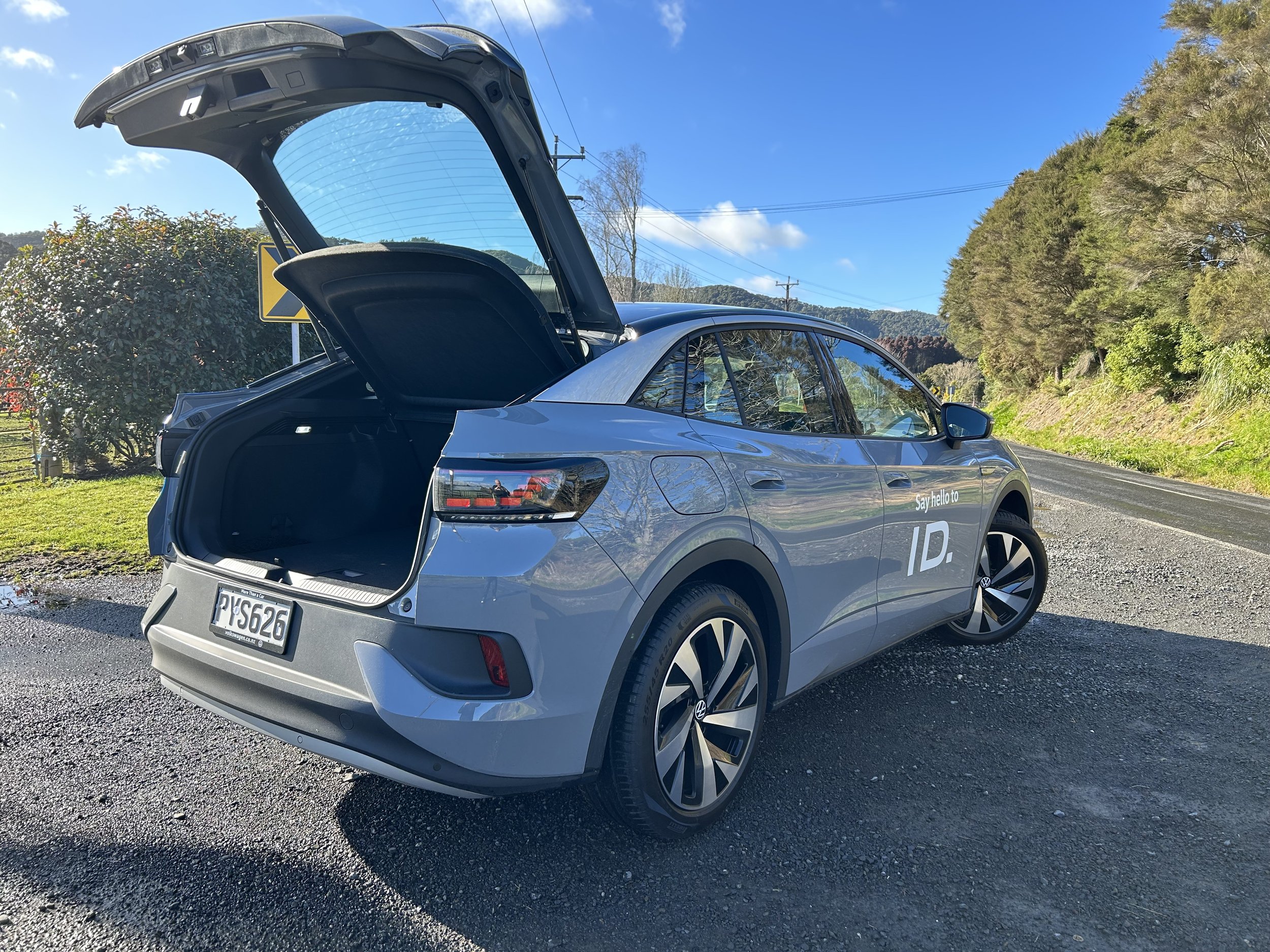ID arrival puts spotlight on incentives
/The Clean Car rebate is helping sell electrics, but Volkswagen wonders if the road user charge exemption is also fuelling that desire.
U-TURNING on making electric vehicles heft road user charges would benefit battery car sales, a brand out to shake up the sector believes.
Exemption EVs enjoy has been a highly controversial policy Government has said it intends to curtail on March 31. Conceivably, from then EV owners will be charged $76 per 1000km, to add to the $2 billion in RUC raised from other motorists, mostly truckers and diesel car owners.
However, a report out today is highlighting this being a rough road.
Radio New Zealand National says documents released under the Official Information Act suggest the road user system as it is could not cope, that enforcement is riddled with issues, will be hard to police and is highly likely to meet non-compliance.
The story has timed with Volkswagen New Zealand launching its ID.4 and ID.5 electric cars; long-awaited, next-generation replacements for the Golf-e it first tried out in the category.
In detailing aspiration for the sector debuting sister models - the ID.4 SUV and the slinkier, coupe-inspired ID.5 - VW NZ high-ups noted EV popularity is sustained by incentives.
Jordan Haines (above), VW NZ national sales manager, says the Clean Car rebate for sub-$80,000 cars has clearly influenced EV sales, but he suspects the RUC exemption is also a tasty inducement.
As much as exemption has eaten into revenue raised at the fuel pump for fixing roads, continuing the leniency might also be a positive.
“Any further tax or anything on EVs would not be helpful. I think if they can keep them exempt for longer, that would be better.”
The Auckland-based operation is itching to reap reward from cars it began planning for five years ago and once believed it would have in 2021 and, after that fell through, in 2022. Specifications and pricing for the variants landed now and in good supply going forward were released months ago - in expectation of release earlier in the year.
Factors contributing to the hold-ups are multiple. Some relate to Covid 19 and the ar in Ukraine, some are to do with VW Germany deciding to satisfy demand in Europe before addressing right-hand-drive export markets other than the United Kingdom.
NZ is still the first country outside of Europe and China to see ID.5 and VW is happy brand fans have kept the faith. It holds 150 forward orders and foresees combined sales of 600 units before year-end and a bigger impact in 2024, with the entry ID.4 Pro tipped to be the primary breadwinner.
The VW cars and the imminent Skoda Enyaq, Cupra Born and Audi Q4 - all on a common MEB platform, with the same 150kW single motor fed by a 77kWh battery - are just the first salvo.
VW NZ intends to add a hot hatch-chasing dual motor ID.4 GTX next June and bring in the smaller ID.3, likely at end of 2024 though that timing is flexible, being dictated by availability of a facelift revealed recently in Europe.
Later in the future come more ID cars, including a budget hatch, recently represented by the ID2all concept. It will base on a new MEB Entry Platform, and will be the first VW electric with front-wheel drive.
Some time next year, too, the cars launched today will adopt a more powerful electric motor; a revision also coming to the Enyaq.
More? Likely as not, there will be. Having delivered over 570,000 EVs last year, enough to maintain its position as BEV market leader in Europe, VW is spending more - around $400 billion - to build more.
With all that planned, the smoother the NZ market sales route, the better, local brand high-ups suggested in Auckland today.
VW NZ expects a significant percentage of initial ID buyers will be existing VW owners, trading out of internal combustion engine product. In the longer term, though, it will start to win brand newcomers.
What are they buying into? Driving opportunity wasn’t enough to warrant this becoming the usual ‘first drive’ report.
It also restricted to an ID.5 Pro Plus, whose difference in look over the blockier ID.4 is plain, though the outcome of it having a lower roof isn’t as radical as you might think - headroom is reduced, yes, but not cruelly.
Otherwise the design variance runs to the biggest speed car having the largest wheels, 21s, and a slightly different bumper, while it absents the distinctive spoiler add-on over the window found on ID.4.
While occupant room is larger than you'll find in many conventional crossovers, it’ll be interesting to compare with Enyaq, which is massively roomy. Still, it should be possible to fit three kids in the back of both VWs. The rear seat backs split and fold down and, depending on the position of the movable boot floor, a completely flat cargo area can be created.
The dashboard and switchgear are different to those in VW’s combustion cars, but not so much that anyone acquainted with those will be lost. The main infotainment touchscreen and smaller display showing the speedo are nicely done; be aware this is a voice-control car and just saying another about ‘ID’ is enough to prompt it into trying to help you. There’s a conventional start/stop button, car will also start with just the twist of the drive controller so long as you have the key in your keeping.
Driving-wise, emphasis seems more on about refinement rather than outright rapidity; a sensibility I applaud. It accelerates smoothly and serenely, pleasantly piling on speed rather than pinning your head back. and does so with quietness. No electric whine here. The 'sound insulated' windscreen and double glazed side windows also cut out extraneous noise. It’s not so much a cocoon that you won’t still hear other traffic, but tyre noise is well-quelled.
It’s not true all electrics drive the same; nor does it seem fair to say all MEBs are identical in their driving feel. The ID.5 seems between the two others I’m familiar with, the Cupra Born and Enyaq - the first is very firm, for sporty intent, the latter tuned for compliance, a Skoda 101. The ID.5 appears to deliver bump absorption with some tautness, but not so much as to be ruinous to comfort. If the derivatives on the 20 inch rims are the same as the flagship on 21s, its promises to be genuinely enjoyable to drive but not at the discomfort of passengers.
Range accuracy will have to await a full test. The battery pack can be charged at up to 125kW on DC fast chargers and up to 11kW at home.
Though VW is confident its cars are as good as any others in their price brackets, Haines says it is clear incentives are taken into account by buyers, not least newcomers to electric.
Clean Car amendments effected on July 1 reduced the rebate by over $1000, to $7015, and the new car buying activity since then has been unusually quiet.
Yet Haines indicates confidence of a post-election resurgence, though that depends on who holds the reins of power after the general election in October and what policies are implemented.
The industry is keen to see whether the incentive will remain if a change of Government occurs.
VW’s experience is that the rebate defines distributors’ product planning and pricing decisions; it certainly did for ID.5 Pro. When pricing was first shared, the ID.4 Pro was sole rebate eligible model, with the ID.5 Pro $4500 dearer. Now they both sit at $79,990.
Current planning is to revert the coupe model to its original pricing at end of September, though that’s not a hard and fast determination. It’ll come down to volume. If it’s popular, it might stay the special pricing course for longer.
However it goes, it’s thought the base cars will be rather more popular than the richer-trimmed Pro Plus ID.4 $89,990 and ID.5 at $94,490, at least initially, while the SUV shape will achieve at least two sales for every one taken by the coupe.
Haines says sticker-shaving is not an unusual strategy. Many brands chasing rebate dollars will have cut margins to achieve eligibility, for sake of enhancing interest.
“You do need to be under that price point even if you need to reduce, you know, the profitability in it.
“We would love to rebate to stay, but you know, it's very hard to control those political factors.”
His view is that “if the rebates go, prices will climb, though perhaps only slightly.”
Arrival of the ID is not a signal VW here is going to stop selling internal combustion cars entirely, but the ranks are thinning.
Newly installed VW NZ passenger division general manager Chanelle McDonald says one fresh decision has been to drop the small T-Cross sports utility rather than continue it into an imminent update form.
Meantime, while overseas’ reports suggest the brand’s most famous current car, the Golf, will go into full electric format in its next, ninth generation, the current car is showing up next month with a GTE badge, signalling it has a plug-in electric drivetrain. The new R edition of the large Touareg sports utility at the end of this year will also take the same technology.





















